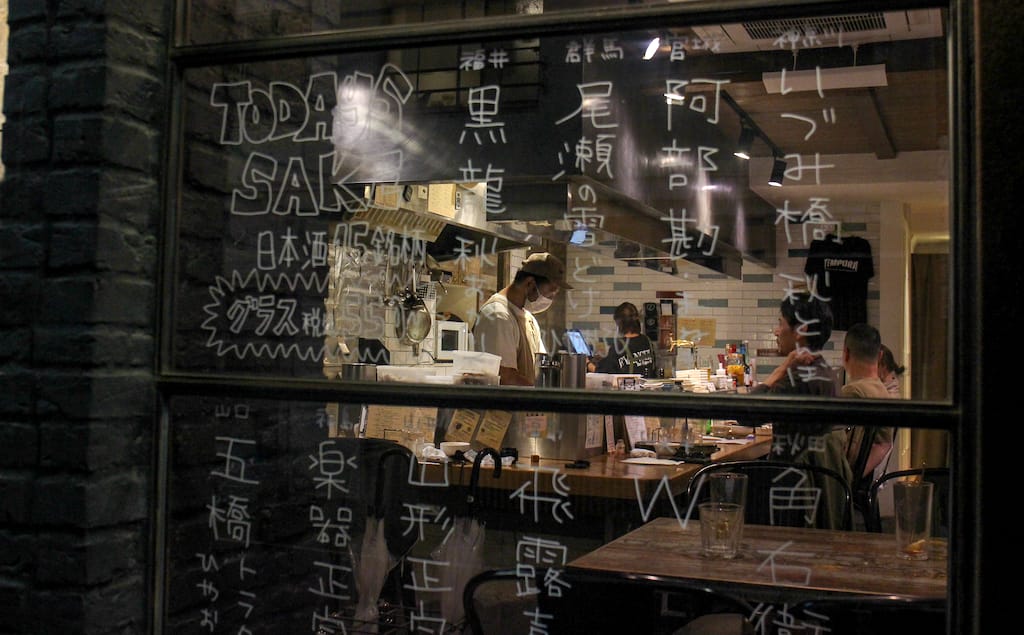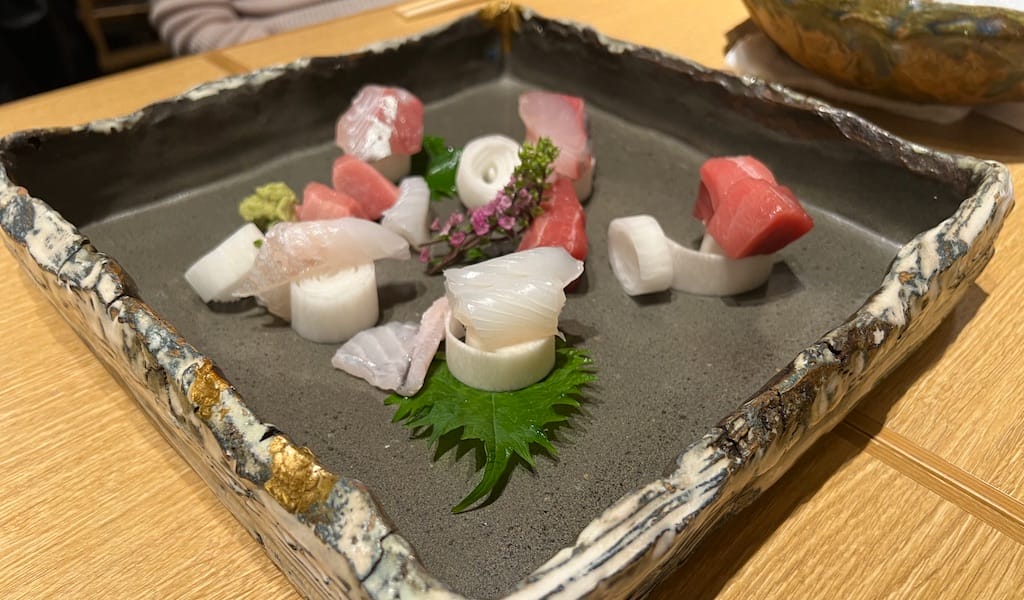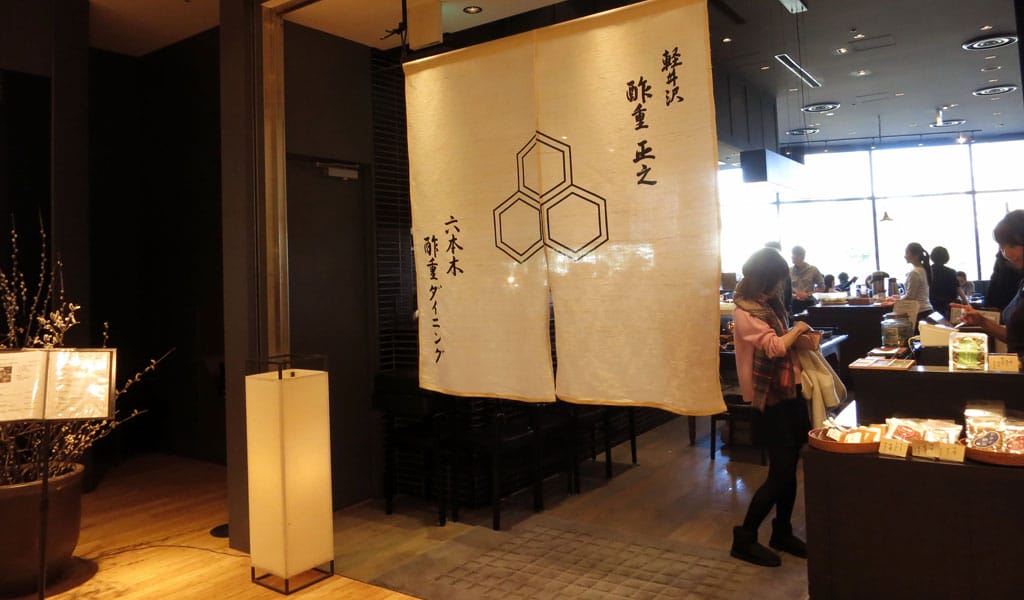It might easily be mistaken for a hipster café. From the street in buzzing Shinjuku City ward, a large window illuminates an open kitchen where Yuichi Itoi, sporting a baseball cap, white T-shirt and piercings, is prepping ingredients. As we step inside, we’re greeted by the sound of low-key hip-hop and the chatter of two young couples sat at the counter, sipping drinks. Two men are at a table butted up against a bare brick wall, an open laptop amidst their plates.
But this is no café. Tempura Dining Itoi is a restaurant born from chef-owner Itoi’s devotion to washoku – traditional Japanese cuisine. Except here, he’s doing things his way.
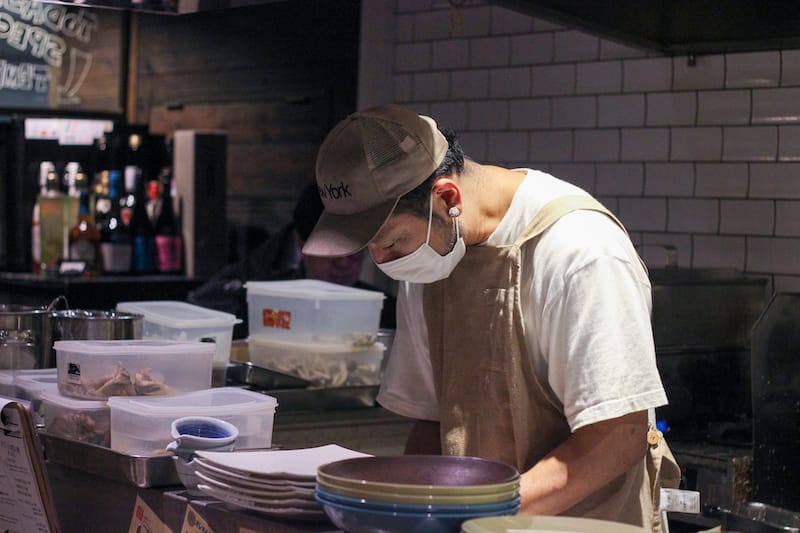
Behind that kitchen counter, Itoi is framed by Tupperware towers of different kinds of mushrooms and other vegetables. He moves swiftly, reaching for ingredient after ingredients, gently battering them, before introducing them to hot oil with a satisfying sizzle. He spends much of his time head stooped over the large pan as it bubbles with the promise of what is to come – beautiful morsels of tempura.
Meanwhile, manager Yuka Nishio is taking orders and diligently advising customers on what sake should accompany their meal. She recommends us a hiyaoroshi autumn sake from a brewery in the northern prefecture of Miyagi that grows its own rice. It proves the perfect start to the evening, fresh with well-balanced acidity, easing us into our contemplation of the menu.
On an acquaintance’s recommendation, we order kabu (turnip) with just a dash of cynicism; in a survey of people’s favorite vegetables, the humble turnip is unlikely to come out on top.
This turnip, however, feeds us humble pie – crisp to the bite and giving way to surprising juiciness. It’s all encased in a light tempura batter that we dunk in an excellent tentsuyu (tempura dipping sauce). The umami from the katsuobushi and konbu combined with a gentle sweetness are perfectly poised to enhance the essence of each ingredient.

Our tempura travels continue from here. We voyage through lotus root – also crisp and juicy – then some thick-cut aubergine. We head into autumn, welcoming the gentle earthiness of maitake mushrooms. A soft-boiled egg oozes yolk into a light dashi broth. Avocado arrives with soy sauce and wasabi, a holy trinity of flavors.
Itoi’s creativity is evident throughout the meal. There’s kobashira kakiage, small scallops in a fritter-like tempura cluster, enhanced with onions and flecks of mitsuba, a common Japanese herb. Then there’s simmered anago (sea eel) battered and coated with sansho (Japanese pepper), its prickly floral notes intoxicating.
While this sounds like a decadent spread, the prices at Tempura Dining Itoi are as light as the batter, ranging from as a little as 150 yen to 450 yen for a piece. For Itoi, this is a key part of his mission: making washoku more accessible to young people.
Born and raised in Tokyo, he trained in kaiseki, the high-quality, high-class traditional multi-course Japanese meal. But he longed to be free from the formal constraints that surrounded it – a culture that doesn’t permit baseball caps and piercings in the kitchen, let alone hip-hop in the dining room. Pondering his options for independence, he recalled that his teacher at culinary school always complemented him on his tempura-frying skills, and so the idea for Tempura Dining Itoi was born.
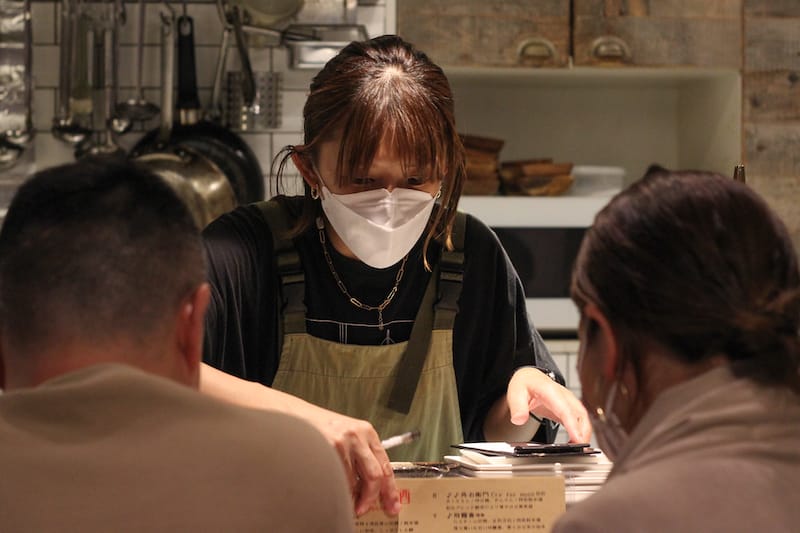
“Formal places are too serious, so you can’t fully enjoy the meal,” says Itoi. “I believe food becomes even more delicious when you’re relaxed.”
This doesn’t mean he’s turning his back on his formal training, but rather utilizing his skills and knowledge to expand culinary possibilities.
“I love washoku,” he says, emphatically. “I really want to preserve its foundations in what I’m doing here.”
One seasonal dish on the menu this evening is kuri no shibukawani, a kind of candied chestnut. Itoi says it’s a recipe that requires commitment, repeatedly boiling the chestnuts over two to three days. The result is a culinary jewel, sweet yet earthy, and the tempura batter adds even more textural fun.
“Many young people have never tried this. I want to introduce these kinds of dishes to them,” he enthuses.
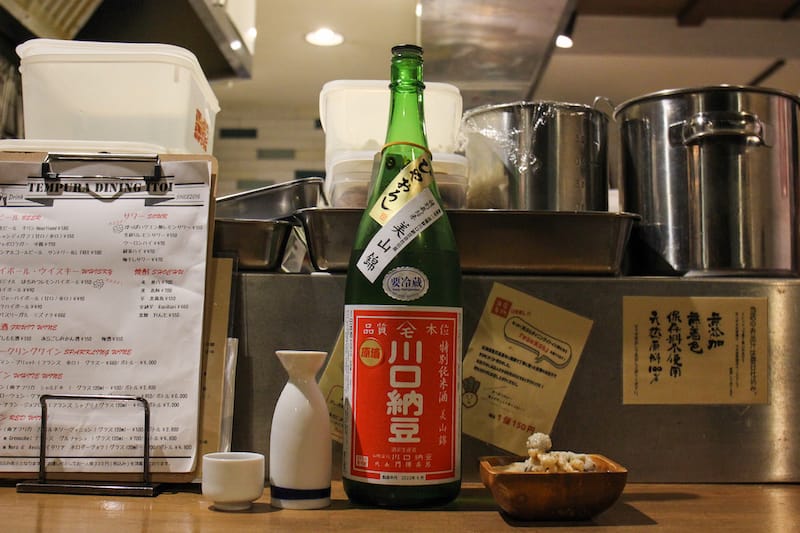
The restaurant also has a varied sake menu, helping to open the doors to Japan’s national drink. The beverage has long fallen out of favor, leaving the industry scrambling over the past decade to appeal to the younger generations, with specific efforts to also target female consumers.
Tempura Dining Itoi’s Nishio is a part of this new audience demographic. She joined Tempura Dining Itoi just a year after its opening.
“I knew nothing about sake then. I was more of a beer drinker,” she says with a laugh.
Thus began her journey into sake with a lot of hard work, study and learning on the job. She regularly visits three sakaya (sake stores) to personally choose every sake for the menu. When a bottle is finished, a new one is added to the menu to replace it. It’s fast-paced, and the learning is never-ending.
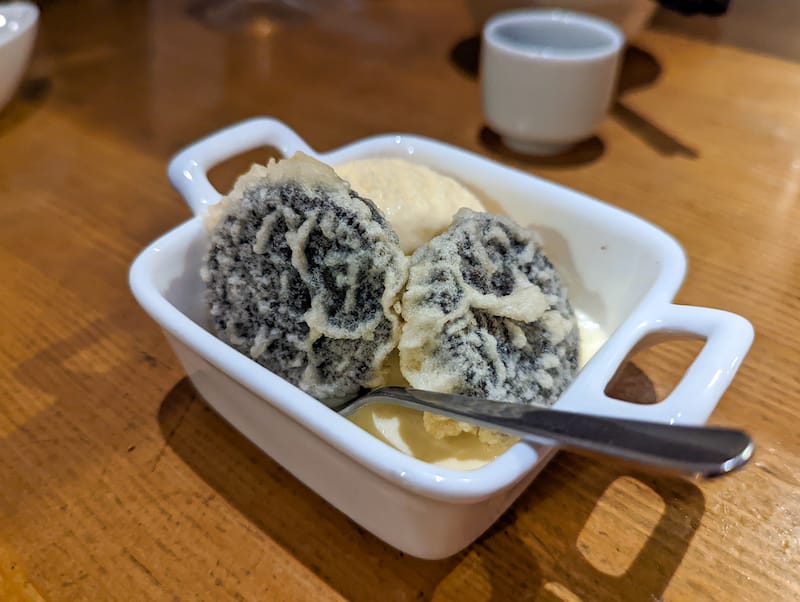
We finish the evening with Oreo tempura, a dessert emblematic of how Itoi is keen to push the boundaries of washoku. The soft, warm chewiness of the biscuit proves an addictive contrast to the cold, smooth creaminess of vanilla ice-cream.
When asked what the future holds, Itoi pauses for a moment before laying his ambitions out bare.
“I’d like to get a Bib Gourmand in the Michelin Guide. I don’t know if I can, but I’d like to aim for that.”
In the meantime, however, Itoi’s approach has another message for those in his industry – that respecting washoku might mean rethinking and redefining it for modern times.
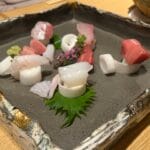 February 29, 2024 Miura
February 29, 2024 Miura
The Japanese philosophy of ikigai follows four key tenets: to find in life what we love, […] Posted in Tokyo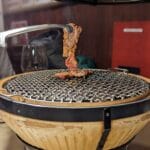 October 20, 2023 Yakinikuen Azabujuban: Underground Barbecue
October 20, 2023 Yakinikuen Azabujuban: Underground Barbecue
Our introduction to Yakinikuen takes place on a Saturday night. Two German friends, […] Posted in Tokyo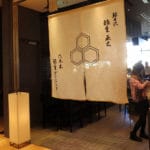 June 14, 2021 Suju Dining Rokkaku
June 14, 2021 Suju Dining Rokkaku
Many people think of miso as the soup that gets tacked onto every Japanese meal. We can […] Posted in Tokyo
Published on October 20, 2022
Related stories
February 29, 2024
TokyoThe Japanese philosophy of ikigai follows four key tenets: to find in life what we love, what the world needs, what we are good at and what we can get paid for. At Miura, chef and owner Hiroki Nara has found ikigai through his stunning gourmet fish restaurant. This idyllic little secret is tucked into…
October 20, 2023
TokyoOur introduction to Yakinikuen takes place on a Saturday night. Two German friends, former Tokyo residents and long-time fans of the restaurant, were determined to take an edible trip down memory lane. “We’ll already be in the queue. Hurry!” they told us. Reservations at Yakinikuen, apparently, are only taken for weekdays before 7 p.m., and…
June 14, 2021
TokyoMany people think of miso as the soup that gets tacked onto every Japanese meal. We can still remember our first experience of Japanese food in the West, when the waiter brought the soup at the end of the meal, and someone thought he’d forgotten to serve it at the beginning. Any self-respecting Japanese meal,…







































